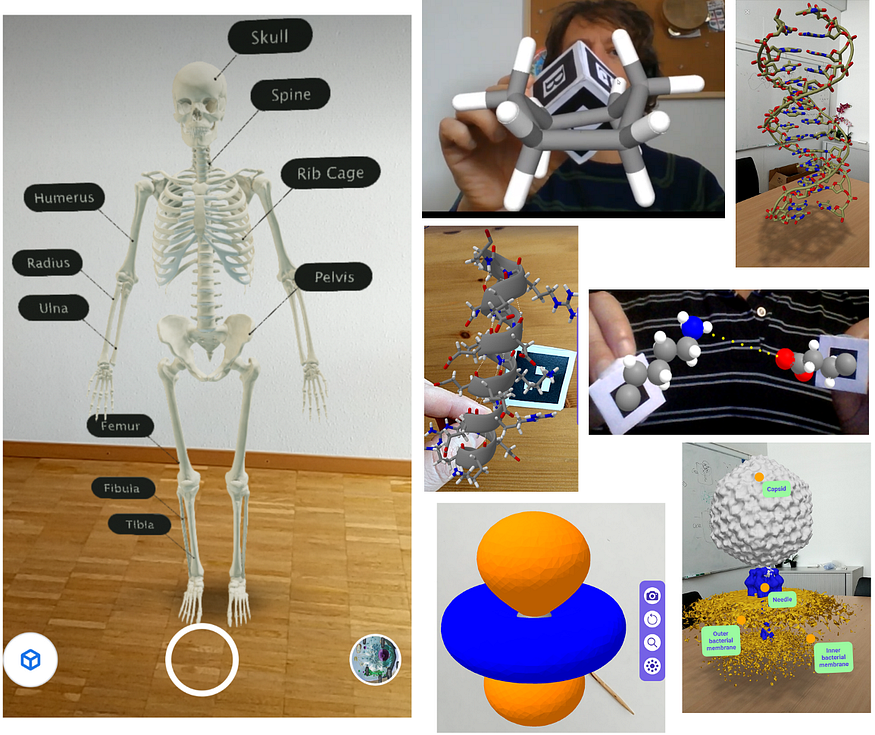
Interactive augmented reality web apps to enable immersive experiences for science education worldwide at no cost
Last Updated on July 20, 2023 by Editorial Team
Author(s): LucianoSphere
Originally published on Towards AI.
Multimedia material helps teachers to better convey knowledge, and students to grasp concepts, in unique ways. Virtual, Augmented and Mixed realities (XR, where X=V, A, R) can potentially enhance learning experiences even more, by allowing users to handle and interact with virtual objects in their space. While “classical” XR usually requires expensive, complex-to-setup hardware and software that not even wealthy countries can afford at large, the advent of Web-based XR that runs on consumer devices like smartphones is making such experiences available everywhere, at any time, at no cost, without any specialized hardware or software, democratizing access to the latest pedagogical tools.

Various examples of augmented reality views useful for chemistry and biology education that run in the web browsers of regular devices. The technology and its reach are described in this article together with some examples. Figure by author Luciano Abriata.
Quick contents:
IntroductionWhat is so special about this web-based paradigm for XR?Commodity, web-based AR content for biology, based on ModelViewer-controlled use of WebXR on 3D models retrieved from Google searchesThe moleculARweb site: commodity, web-based AR content for chemistry, built with Three.js, A-Frame, Cannon.js, AR.js, and ModelViewerVery wide reach with minimal usage barriers and no need for specialized hardware nor software installsWhat’s the… Read the full blog for free on Medium.
Join thousands of data leaders on the AI newsletter. Join over 80,000 subscribers and keep up to date with the latest developments in AI. From research to projects and ideas. If you are building an AI startup, an AI-related product, or a service, we invite you to consider becoming a sponsor.
Published via Towards AI
Take our 90+ lesson From Beginner to Advanced LLM Developer Certification: From choosing a project to deploying a working product this is the most comprehensive and practical LLM course out there!
Towards AI has published Building LLMs for Production—our 470+ page guide to mastering LLMs with practical projects and expert insights!

Discover Your Dream AI Career at Towards AI Jobs
Towards AI has built a jobs board tailored specifically to Machine Learning and Data Science Jobs and Skills. Our software searches for live AI jobs each hour, labels and categorises them and makes them easily searchable. Explore over 40,000 live jobs today with Towards AI Jobs!
Note: Content contains the views of the contributing authors and not Towards AI.














